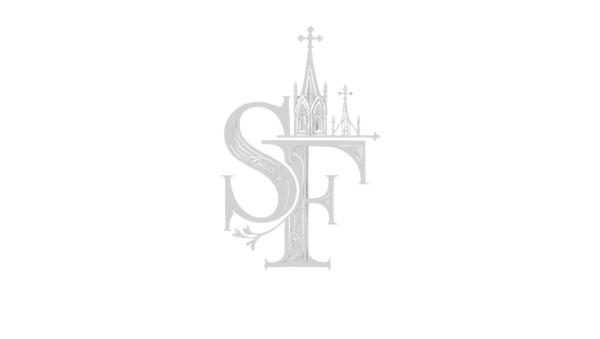
Gothic cathedrals are often celebrated for their soaring spires and radiant windows, but step closer and you will find a quieter beauty: the delicate carvings that decorate arches, windows and doorways. Among these, quatrefoils, trefoils and foliate motifs stand out as recurring symbols, each carrying layers of meaning that go far beyond decoration.
These shapes and patterns, circles divided into petals, leaves curling in stone, vines climbing across portals, are the language of Gothic ornament. To the medieval eye, they were not just embellishments, but reminders of faith, morality and the natural order.
Trefoils: The Trinity in Stone
The trefoil, formed of three overlapping circles or lobes, is one of the most recognisable Gothic motifs. It symbolises the Holy Trinity, Father, Son and Holy Spirit, making it a visual shorthand for divine unity.
You will often spot trefoils carved into window heads, tracery panels and even choir stalls. Sometimes they are subtle, almost hidden in the shadows of a cloister, while at other times they frame stained glass in brilliant light.
Look closely: Many trefoils are combined with pointed arches, blending structural geometry with sacred symbolism.

Quatrefoils: Balance and the Four Gospels
If the trefoil represents three, the quatrefoil embodies four, often interpreted as the Four Gospels or the four corners of the earth. Its symmetry conveys balance and order, making it a favourite design in Gothic tracery and pavements.
Quatrefoils were also used in storytelling. Many Gothic reliefs frame scenes inside quatrefoil panels, turning the shape into a miniature stage for sacred narratives. This design can be seen on cathedral façades, tombs and choir screens.
What to notice: Some quatrefoils contain small, sculpted faces, coats of arms or animals, reminders that the motif could serve as both frame and symbol.
Foliate Carving: Nature’s Sermon

No Gothic building is complete without foliage. Leaves of oak, ivy, vine and acanthus twist across capitals, archways and choir stalls. Known as foliate decoration, these carvings tied the natural world to the sacred space.
To medieval worshippers, this was more than artistic whimsy: vines symbolised Christ and the Church, oak represented strength, and ivy suggested eternal life. Foliage carved in stone turned the cathedral into a garden of faith.
Sometimes, foliate details merge into green men, mysterious faces with vines sprouting from their mouths, a motif that blends Christian and pre-Christian symbolism.
Geometry and Craft
All three motifs, trefoil, quatrefoil and foliate, were rooted in geometry. Medieval masons used compasses and simple ratios to generate these repeating shapes, embodying harmony and divine order.
Their repetition across Gothic Europe reveals a shared visual language. Whether in France, England or Germany, the same forms appear, linking communities through a common spiritual and aesthetic vocabulary.
Where to See Them
Trefoils: Notre Dame de Paris (France), Lincoln Cathedral (England), Cologne Cathedral (Germany)
Quatrefoils: Chartres Cathedral (France), Westminster Abbey Chapter House (England), Siena Cathedral (Italy)
Foliate Carvings: Southwell Minster (England; famous for its “Leaves of Southwell”), Burgos Cathedral (Spain), Amiens Cathedral (France)
Resources and Further Reading
Erwin Panofsky, Gothic Architecture and Scholasticism
Paul Frankl, Gothic Architecture
Stephen Murray, Notre-Dame of Amiens: Life of the Gothic Cathedral
“Quatrefoil” and “Trefoil” entries on Wikimedia Commons
Southwell Minster’s “Leaves of Southwell” project: Southwell Leaves
Spires and Facts is an independent platform created for educational and informational purposes only. This article has been compiled from publicly available sources to share knowledge and inspire curiosity about Gothic architecture and history. We are not affiliated with, endorsed by, or sponsored by any of the organisations, websites, or individuals mentioned here. Any external links are provided for reference only and do not imply promotion or partnership. Readers are encouraged to use their own discretion when exploring further resources.

